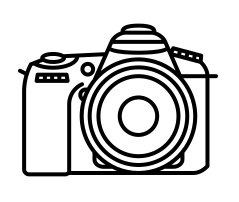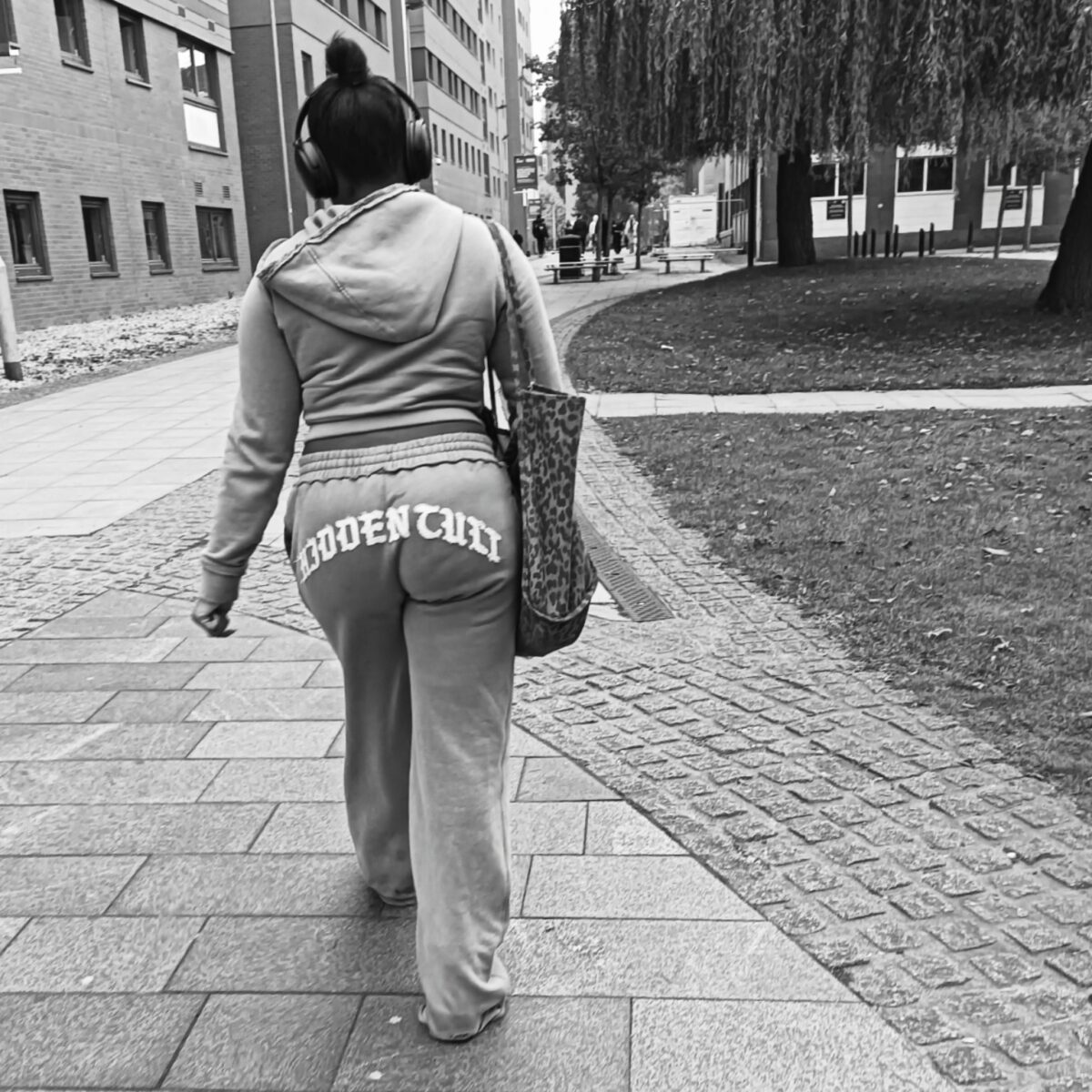Hidden Cult: The Price of Being Seen
A student walks onto campus in a matching sweatsuit. The words Hidden Cult stretch across the back in Gothic script. The outfit costs more than two hundred pounds. A plain one from M&S would cost a sixth of that. Yet the message stitched into the cloth draws the eye more than the price tag. It says something that seems both proud and shy: “I belong, but you can’t quite reach me.”
That small phrase captures much about life in a culture that trades on self-display. It brings together psychology, sociology, anthropology, and even spirituality. Each offers a way to read what is happening when a person wears words that claim secrecy yet invite attention.
Identity as balance
Erik Erikson (1968) wrote that identity forms in tension between sameness and change. People need to feel part of something shared, but they also need to feel distinct within it. The Hidden Cult slogan turns that tension into an emblem. The student wants to join the tribe of youth fashion while keeping an air of mystery. Maslow (1943) saw this drive for esteem and self-actualisation as a basic human need once survival is secure. The wish to be seen as unique is not vanity but a form of growth – a way of saying, “I count.”
Social identity theory adds another layer. Tajfel and Turner (1979) showed that people form a sense of self by belonging to groups. Yet pure conformity weakens pride. Brewer (1991) called this “optimal distinctiveness” – standing out just enough to feel valued but not rejected. The “hidden cult” label performs this balance. It marks inclusion and exclusion at once. You are part of the club only if you recognise it.
The social stage
Erving Goffman (1959) saw social life as a stage where people manage impressions. Clothes, gestures, and language become props in a constant performance of the self. Zygmunt Bauman (2000) later argued that modern identity is no longer given by birth or role but must be built and rebuilt through consumption. The student’s £204 outfit fits this world. It is not only fabric but a script: a way to act out belonging, irony, and style.
In older societies, outward marks of identity – religious robes, clan colours, or trade tools – linked the wearer to stable meanings. Now the signs float. A slogan may mean allegiance, sarcasm, or both. The “cult” might not exist at all; what matters is the posture of being in on the secret. The garment offers both safety and edge, a ticket to the economy of cool.
The price changes the reading. As Pierre Bourdieu (1984) showed, taste works as a form of social capital. People use cultural goods to mark class and distinction. By paying ten times more than the M&S or Decathlon version, the student buys not warmth but status. The brand promises access to a “hidden” world of style insiders. The cost itself becomes part of the performance – proof that one can afford irony.
The body as sign
Anthropology reminds us that this is not new. Victor Turner (1969) described ritual symbols as tools that move people between the private and public worlds. Tattoos, ornaments, and dress make inner identity visible. They also carry risk: once worn, they can be read by others. The “Hidden Cult” print sits on the lower back – a place both intimate and on display. It turns the body into a billboard while claiming secrecy.
In this sense, modern branding borrows the force of ancient ritual. The label is a totem that signals both belonging and change. But unlike sacred symbols, it has no fixed meaning. Its power lies in ambiguity. It promises transformation through purchase, not through rite. The self becomes a project of design rather than of faith or duty.
The hunger to be seen
At the root sits a simple psychological truth: people need to be recognised. To be ignored is to shrink. The wish for visibility now meets a world flooded with eyes. On social media, everyone performs for everyone else. Visibility becomes scarce; meaning becomes thin. The student’s outfit, then, is not just a style choice but a coping act – a way to stand out in a crowded field of signals.
This connects to Martin Buber’s (1937) idea of I–Thou relationship. Real meeting, he said, happens when two people see each other as full beings, not as objects. In greetings like the Sanskrit Namaste or the Zulu Sawubona, seeing is mutual. One says, “I see you,” and the other replies, “I am here.” Recognition gives existence.
Modern life often swaps that deep seeing for shallow visibility. “Look at me” replaces “See me.” The logo becomes a plea for witness, even if the witness is a stranger on a bus. The spiritual act of being seen by another soul turns into a market act of being noticed by an audience. The need is ancient; the method is modern.
The triangle of gaze
The meaning deepens when a photographer enters the scene. Their lens fixes the fleeting act of self-presentation. They become both participant and observer. The image travels to others who were never there, inviting them into the exchange. The student, the photographer, and the viewer form a triangle of gaze. Each plays a part in keeping the sign alive.
The viewer, seeing the words “Hidden Cult,” completes the performance. They might admire, mock, or simply note the irony. But in doing so, they answer the call the message sends. Without an audience, the slogan is dead thread. With one, it becomes a mirror that reflects both wearer and watcher. Each wonders, perhaps, what kind of cult they are already in.
Money, meaning, and the sacred
The cost of the outfit sharpens the irony. To wear “Hidden Cult” as a luxury brand is to buy the illusion of secrecy. The market turns rebellion into product. Yet even in this cycle, the gesture holds a trace of the sacred. The wish to belong, to be seen, to stand apart – these are human constants. The market only reshapes them.
The student’s act might look vain, but it also shows courage. To mark the body with words is to risk misreading. It exposes the tension between private and public, self and group, spirit and market. The same impulse that once drove people to paint their faces or wear amulets now drives them to wear slogans. The means change; the desire endures.
What we see in Hidden Cult is a compressed story of modern identity. It is spiritual longing repackaged as style. It is the old human search for recognition playing out in the aisles of Selfridges. It is the self trying to find an “I–Thou” moment in a culture built on “I–like.”
Seeing beyond the surface
For the photographer, capturing that phrase might feel like recording a riddle. Are they witnessing satire, confession, or pure display? For the viewer, the image offers a choice: to stay at the surface or to look through it. To see the slogan only as a fashion quirk is to miss the quiet ache beneath it – the wish to be known in a world that trades attention for depth.
If one reads it with a spiritual eye, the words ask a question rather than make a claim: Can you see me, not just look at me? The answer depends on how we choose to look – at each other and at the symbols we wear.
In that sense, the sweatpants are not trivial. They are a small, vivid record of how people today use cloth, price, and language to manage the oldest struggle of all: how to be both part of the crowd and more than it. The “hidden cult” is every person’s quiet wish to be recognised without being consumed.
Running through my head
When I feel drawn to make an image in the street it is rarely if ever for ‘artistic’ purposes. I’ve usually seen something unusual and a load of questions are firing off in my head and the image is to be a prompt for me to reflect on later.
In this case, the thoughts that were running through my head (albeit in a jumbled fashion) as I sped up, got my phone ready and weighed up where to try to get the picture…
WHAT IS SHE TRYING TO SAY? What makes a young person wear a sweatsuit that says ‘Hidden Cult’ in such an unusual manner and in Gothic script? Why choose words about hiding and belonging at the same time? Does this contradiction show a wish to be noticed but to ward off judgement, or to look confident while really feeling insecure? Does it represent a conflict between wanting to fit in while needing to stand out?
WHAT WILL THE CONSEQUENCES BE FOR HER? While I didn’t know the exact price, the position of the logo (I’ve never seen a logo that size on the back of trousers of any kind before) and its symbolism suggested that it was ‘designer’. This ensemble (including the leopard print bag rather than a student back-pack) represents an investment way beyond that of her peers, and makes her different from them. How do they respond? What does this suggest about her aspirations?
WHAT’S THE ‘BIGGER PICTURE’? What does this say about youth, belonging, and identity in a place meant for learning and social mobility? What are student’s priorities here?
HOW MUCH CAN I FIT INTO ONE IMAGE? As the photographer, can I represent the message in ways that honour their self-expression, show their truth, while reflecting a bigger picture of universal mid-adolescent tensions?
References
Bauman, Z. (2000). Liquid modernity. Polity Press.
Bourdieu, P. (1984). Distinction: A social critique of the judgement of taste. Routledge.
Brewer, M. B. (1991). The social self: On being the same and different at the same time. Personality and Social Psychology Bulletin, 17(5), 475–482.
Buber, M. (1937). I and Thou. T. & T. Clark.
Erikson, E. H. (1968). Identity: Youth and crisis. Norton.
Goffman, E. (1959). The presentation of self in everyday life. Doubleday.
Maslow, A. H. (1943). A theory of human motivation. Psychological Review, 50(4), 370–396.
Tajfel, H., & Turner, J. C. (1979). An integrative theory of intergroup conflict. In W. G. Austin & S. Worchel (Eds.), The social psychology of intergroup relations (pp. 33–47). Brooks/Cole.
Turner, V. (1969). The ritual process: Structure and anti-structure. Aldine.

